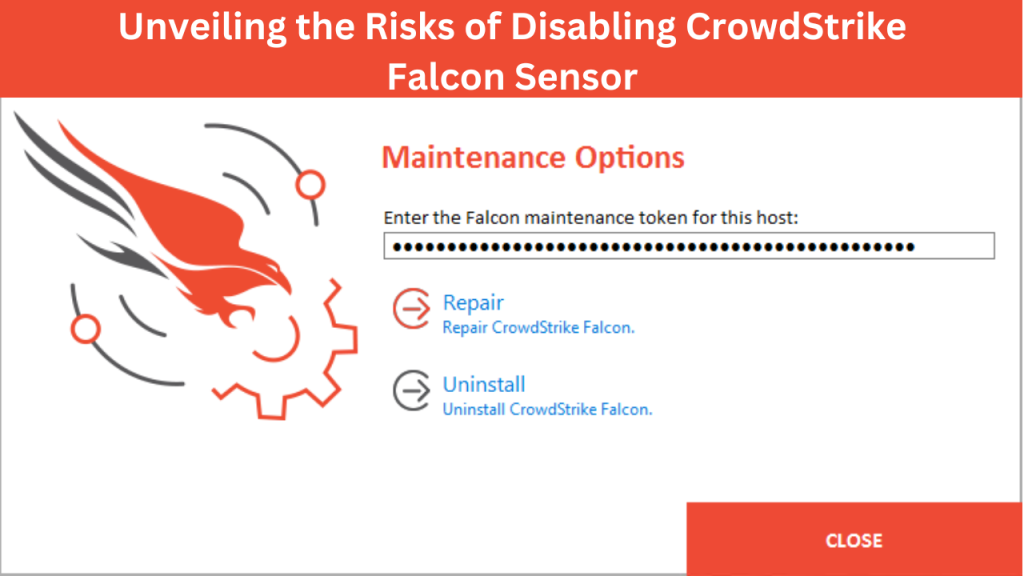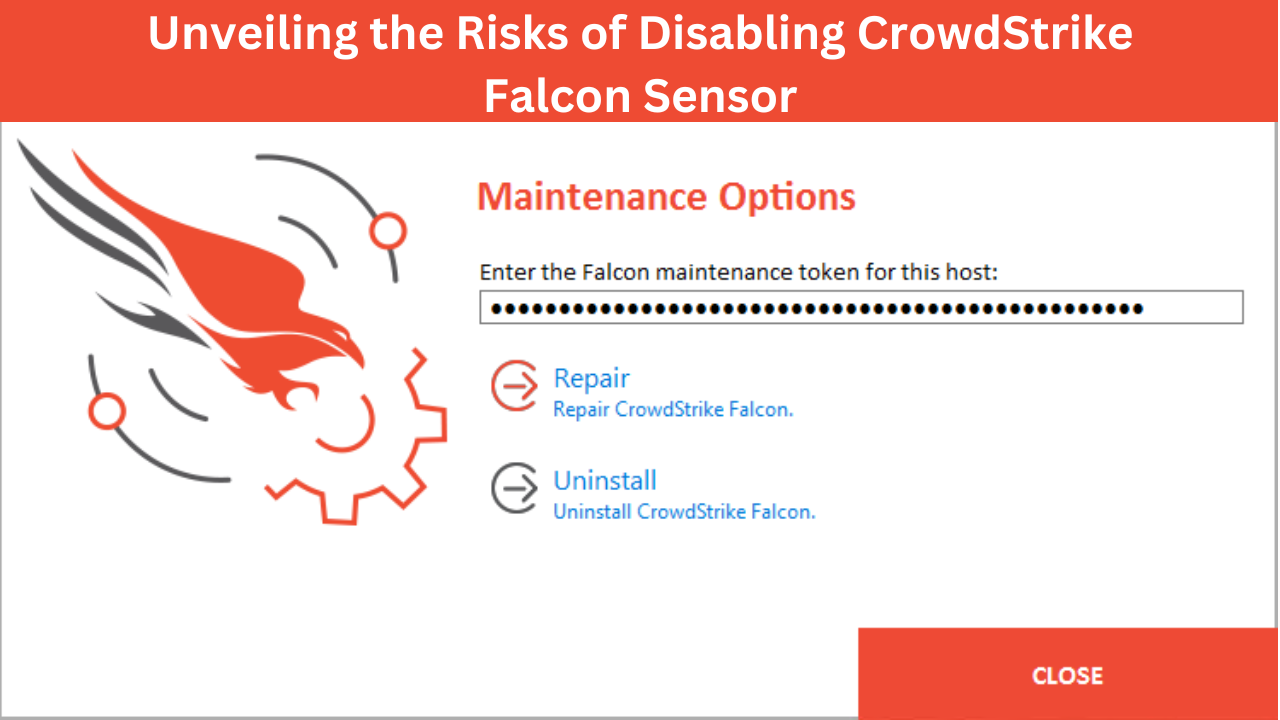CrowdStrike Falcon sensor disable – In today’s interconnected digital landscape, cybersecurity has become paramount for individuals and organizations alike. With the proliferation of sophisticated cyber threats, companies rely on advanced security solutions to safeguard their networks and data. CrowdStrike Falcon Sensor is one such solution that has gained widespread adoption due to its effectiveness in detecting and mitigating cyber threats.
However, recent discussions have surfaced regarding the potential consequences of disabling the Falcon Sensor. In this article, we delve into the intricacies of CrowdStrike Falcon Sensor, explore the reasons behind disabling it, and dissect the risks and ramifications associated with such actions.
Suggested Content
Unveiling the Power of CrowdStrike Falcon Sensor: Revolutionizing Cybersecurity
CrowdStrike Falcon Sensor - In today's digital age, where cyber threats are ever-evolving and becoming more sophisticated, organizations face an uphill battle in safeguarding their sensitive data and infrastructure. Traditional security measures are often insufficient in providing real-time threat detection and response capabilities, leaving gaps that cybercriminals exploit with devastating consequences. In response to this...
Understanding CrowdStrike Falcon Sensor
CrowdStrike Falcon Sensor is a critical component of the CrowdStrike Falcon platform, which provides endpoint protection by leveraging artificial intelligence, machine learning, and behavioral analytics to detect and prevent cyber threats in real-time.
Installed on endpoint devices such as laptops, desktops, and servers, the Falcon Sensor continuously monitors and analyzes system activities to identify malicious behavior and thwart potential attacks. By providing visibility and control over endpoint devices, CrowdStrike Falcon Sensor empowers organizations to strengthen their cybersecurity posture and safeguard sensitive information from cyber threats.
Motivations Behind Disabling Falcon Sensor
Despite its efficacy in bolstering cybersecurity defenses, there are instances where organizations may contemplate disabling CrowdStrike Falcon Sensor. One primary reason is the perceived impact on system performance and user experience. Some users may complain of system slowdowns or compatibility issues arising from the continuous monitoring and analysis conducted by the Falcon Sensor.
Additionally, concerns regarding privacy and data collection practices may prompt individuals or organizations to disable the sensor to mitigate perceived risks associated with data exposure or misuse. Furthermore, in certain scenarios, regulatory requirements or internal policies may necessitate the temporary or permanent disabling of security solutions like the Falcon Sensor, albeit with careful consideration of the potential consequences.
Risks Associated with CrowdStrike Falcon Sensor Disable
Disabling CrowdStrike Falcon Sensor entails significant risks that can compromise the security posture of an organization and expose it to a myriad of cyber threats. One of the most immediate risks is the loss of real-time threat detection and response capabilities.

Without the continuous monitoring provided by the Falcon Sensor, organizations become vulnerable to various cyber threats, including malware, ransomware, and advanced persistent threats (APTs). Attackers may exploit this security gap to infiltrate systems, exfiltrate sensitive data, or disrupt operations, leading to financial losses, reputational damage, and regulatory penalties.
Moreover, disabling the Falcon Sensor undermines the effectiveness of proactive threat hunting and incident response activities. CrowdStrike’s threat intelligence and behavioral analytics rely on telemetry data collected by the Falcon Sensor to identify emerging threats and anomalous activities across the network. By depriving security teams of this crucial source of information, organizations limit their ability to detect and mitigate security incidents in a timely manner, thereby increasing the likelihood of prolonged breaches and their associated impact.
Furthermore, the disabling of Falcon Sensor may result in compliance violations and regulatory non-compliance, particularly in regulated industries such as healthcare, finance, and government. Regulatory frameworks such as GDPR, HIPAA, and PCI-DSS mandate the implementation of
Adequate security measures to protect sensitive data and ensure privacy rights are upheld. Disabling security solutions like CrowdStrike Falcon Sensor without valid justification or alternative safeguards may expose organizations to penalties, fines, and legal liabilities, exacerbating the financial and reputational repercussions of a security breach.
Mitigating the Risks
While the risks associated with CrowdStrike Falcon sensor disable are substantial, organizations can take proactive measures to mitigate these risks without compromising security or regulatory compliance.
First and foremost, organizations should conduct a thorough risk assessment and impact analysis to evaluate the potential consequences of disabling the Falcon Sensor in their specific environment. This assessment should consider factors such as the sensitivity of data, the prevalence of cyber threats, and the organization’s risk tolerance.
Additionally, organizations should explore alternative solutions or configurations to address the underlying issues that led to the consideration of disabling the Falcon Sensor. This may involve optimizing system performance, adjusting security policies, or implementing additional security controls to alleviate the perceived impact on user experience or privacy concerns.
Furthermore, organizations should ensure transparency and accountability in their decision-making process regarding the disabling of security solutions like CrowdStrike Falcon Sensor. Clear communication with stakeholders, including employees, customers, and regulatory authorities, is essential to mitigate misunderstandings and maintain trust in the organization’s commitment to cybersecurity and compliance.
Conclusion
In conclusion, disabling CrowdStrike Falcon Sensor poses significant risks to the security, compliance, and resilience of organizations in the face of evolving cyber threats. While concerns related to system performance, user experience, and privacy are valid, organizations must carefully weigh the potential consequences of such actions and take proactive measures to mitigate risks effectively.
By conducting thorough risk assessments, exploring alternative solutions, and fostering transparency and accountability, organizations can strike a balance between security, usability, and compliance in an increasingly complex digital landscape. Ultimately, the decision to disable CrowdStrike Falcon Sensor should be informed by a holistic understanding of the risks and ramifications involved, with due consideration for the organization’s security objectives, regulatory obligations, and risk appetite.
